Cover
Digital Communications, Fifth Edition
ISBN 9780072957167
Brief Contents
Contents
Preface
Chapter 1 Introduction
1.1 Elements of a Digital Communication System
1.2 Communication Channels and Their Characteristics
1.3 Mathematical Models for Communication Channels
1.4 A Historical Perspective in the Development of Digital CommunIcatIons
1.5 Overview of the Book
1.6 BibliographIcal Notes and References
Chapter 2 Deterministic and Random Signal Analysis
2.1 Bandpass and Lowpass Signal Representation
2.1-1 Bandpass and Lowpass Signals
2.1-2 Lowpass Equivalent of Bandpass Signals
2.1-3 Energy Considerations
2.1-4 Lowpass Equivalent of a Bandpass System
2.2 Signal Space RepresentatIon of Waveforms
2.2-1 Vector Space Concepts
2.2-2 Signal Space Concepts
2.2-3 Orthogonal Expansions of Signals
2.2-4 Gram-Schmidt Procedure
2.3 Some Useful Random Variables
2.4 Bounds on Tall Probabilities
2.5 Limit Theorems for Sums of Random Variables
2.6 Complex Random Variables
2.6-1 Complex Random Vectors
2.7 Random Processes
2.7-1 Wide-Sense Stationary Random Processes
2.7-2 Cyclostationary Random Processes
2.7-3 Proper and Circular Random Processes
2.7-4 Markov Chains
2.8 Series Expansion of Random Processes
2.8-1 Sampling Theorem for Band-Limited Random Processes
2.8-2 The Karhunen-Loeve Expansion
2.9 Bandpass and Lowpass Random Processes
2.10 Bibliographical Notes and References
Problems
Chapter 3 Digital Modulation Schemes
3.1 Representation of Digitally Modulated Signals
3.2 Memoryless Modulation Methods
3.2-1 Pulse Amplitude Modulation (PAM)
3.2-2 Phase Modulation
3.2-3 Quadrature Amplitude Modulation
3.2-4 Multidimensional Signaling
3.3 Signaling Schemes with Memory
3.3-1 Continuous-Phase Frequency-Shift Keying (CPFSK)
3.3-2 Continuous-Phase Modulation (CPM)
3.4 Power Spectrum of Digitally Modulated Signals
3.4-1 Power Spectral Density of a Digitally Modulated Signal with Memory
3.4-2 Power Spectral Density of Linearly Modulated Signals
3.4-3 Power Spectral Density of Digitally Modulated Signals with Finite Memory
3.4-4 Power Spectral Density of Modulation Schemes with a Markov Structure
3.4-5 Power Spectral Densities of CPFSK and CPM Signals
3.5 Bibliographical Notes and References
Problems
Chapter 4 Optimum Receivers for AWGN Channels
4.1 Waveform and Vector Channel Models
4.1-1 Optimal Detection for a General Vector Channel
4.2 Waveform and Vector AWGN Channels
4.2-1 Optimal Detection for the Vector AWGN Channel
4.2-2 Implementation of the Optimal Receiver for AWGN Channels
4.2-3 A Union Bound on the Probability of Error of Maximum Likelihood Detection
4.3 Optimal Detection and Error Probability for Band-Limited Signaling
4.3-1 Optimal Detection and Error Probability for ASK or PAM Signaling
4.3-2 Optimal Detection and Error Probability for PSK Signaling
4.3-3 Optimal Detection and Error Probability for QAM Signaling
4.3-4 Demodulation and Detection
4.4 Optimal Detection and Error Probability for Power-Limited Signaling
4.4-1 Optimal Detection and Error Probability for Orthogonal Signaling
4.4-2 Optimal Detection and Error Probability for Biorthogonal Signaling
4.4-3 Optimal Detection and Error Probability for Simplex Signaling
4.5 Optimal Detection in Presence of Uncertainty: Noncoherent Detection
4.5-1 Noncoherent Detection of Carrier Modulated Signals
4.5-2 Optimal Noncoherent Detection of FSK Modulated Signals
4.5-3 Error Probability of Orthogonal Signaling with Noncoherent Detection
4.5-4 Probability of Error for Envelope Detection of Correlated Binary Signals
4.5-5 Differential PSK (DPSK)
4.6 A Comparison of Digital Signaling Methods
4.6-1 Bandwidth and Dimensionality
4.7 Lattices and Constellations Based on Lattices
4.7-1 An Introduction to Lattices
4.7-2 Signal Constellations from Lattices
4.8 Detection of Signaling Schemes with Memory
4.8-1 The Maximum Likelihood Sequence Detector
4.9 Optimum Receiver for CPM Signals
4.9-1 Optimum Demodulation and Detection of CPM
4.9-2 Performance of CPM Signals
4.9-3 Suboptimum Demodulation and Detection ofCPM Signals
4.10 Performance Analysis for Wireline and Radio Communication Systems
4.10-1 Regenerative Repeaters
4.10-2 Link Budget Analysis in Radio Communication Systems
4.11 Bibliographical Notes and References
Problems
Chapter 5 Carrier and Symbol Synchronization
5.1 Signal Parameter Estimation
5.1-1 The Likelihood Function
5.1-2 Carrier Recovery and ymbol Synchronization in Signal Demodulation
5.2 Carrier Phase Estimation
5.2-1 Maximum-Likelihood Carrier Phase Estimation
5.2-2 The Phase-Locked Loop
5.2-3 Effect of Additive Noise on the Phase Estimate
5.2-4 Decision-Directed Loops
5.2-5 Non-Decision-Directed Loops
5.3 Symbol Timing Estimation
5.3-1 Maximum-Likelihood Timing Estimation
5.3-2 Non-Decision-Directed Timing Estimation
5.4 Joint Estimation of Carrier Phase and Symbol Timing
5.5 Performance Characteristics of ML Estimators
5.6 Bibliographical Notes and References
Problems
Chapter 6 An Introduction to Information Theory
6.1 Mathematical Models for Information Sources
6.2 A Logarithmic Measure of Information
6.3 Lossless Coding of Information Sources
6.3-1 The Lossless Source Coding Theorem
6.3-2 Lossless Coding Algorithms
6.4 Lossy Data Compression
6.4-1 Entropy and Mutual Information for Continuous Random Variables
6.4-2 The Rate Distortion Function
6.5 Channel Models and Channel Capacity
6.5-1 Channel Models
6.5-2 Channel Capacity
6.6 Achieving Channel Capacity with Orthogonal Signals
6.7 The Channel Reliability Function
6.8 The Channel Cutoff Rate
6.8-1 Bhattacharyya and Chernov Bounds
6.8-2 Random Coding
6.9 Bibliographical Notes and References
Problems
Chapter 7 Linear Block Codes
7.1 Basic Definitions
7.1-1 The Structure of Finite Fields
7.1-2 Vector Spaces
7.2 General Properties of Linear Block Codes
7.2-1 Generator and Parity Check Matrices
7.2-2 Weight and Distance for Linear Block Codes
7.2-3 The Weight Distribution Polynomial
7.2-4 Error Probability of Linear Block Codes
7.3 Some Specific Linear Block Codes
7.3-1 Repetition Codes
7.3-2 Hamming Codes
7.3-3 Maximum-Length Codes
7.3-4 Reed-Muller Codes
7.3-5 Hadamard Codes
7.3-6 Golay Codes
7.4 Optimum Soft Decision Decoding of Linear Block Codes
7.5 Hard Decision Decoding of Linear Block Codes
7.5-1 Error Detection and Error Correction Capability of Block Codes
7.5-2 Block and Bit Error Probability for Hard Decision Decoding
7.6 Comparison of Performance between Hard Decision and Soft Decision Decoding
7.7 Bounds on Minimum Distance of Linear Block Codes
7.7-1 Singleton Bound
7.7-2 Hamming Bound
7.7-3 Plotkin Bound
7.7-4 Elias Bound
7.7-5 McEliece-Rodemich-Rumsey-Welch (MRRW) Bound
7.7-6 Varshamov-Gilbert Bound
7.8 Modified Linear Block Codes
7.8-1 Shortening and Lengthening
7.8-2 Puncturing and Extending
7.8-3 Expurgation and Augmentation
7.9 Cyclic Codes
7.9-1 Cyclic Codes-Definition and Basic Properties
7.9-2 Systematic Cyclic Codes
7.9-3 Encoders for Cyclic Codes
7.9-4 Decoding Cyclic Codes
7.9-5 Examples of Cyclic Codes
7.10 Bose-Chaudhuri-Hocquenghem (BCH) Codes
7.10-1 The Structure ofBCH Codes
7.10-2 Decoding BCH Codes
7.11 Reed-Solomon Codes
7.12 Coding for Channels with Burst Errors
7.13 Combining Codes
7.13-1 Product Codes
7.13-2 Concatenated Codes
7.14 Bibliographical Notes and References
Problems
Chapter 8 Trellis and Graph Based Codes
8.1 The Structure of Convolutional Codes
8.1-1 Tree, Trellis, and State Diagrams
8.1-2 The Transfer Function of a Convolutional Code
8.1-3 Systematic, Nonrecursive, and Recursive Convolutional Codes
8.1-4 The Inverse of a Convolutional Encoder and Catastrophic Codes
8.2 Decoding of Convolutional Codes
8.2-1 Maximum-Likelihood Decoding of Convolutional Codes - The Viterbi Algorithm
8.2-2 Probability of Error for Maximum-Likelihood Decoding of Convolutional Codes
8.3 Distance Properties of Binary Convolutional Codes
8.4 Punctured Convolutional Codes
8.4-1 Rate-Compatible Punctured Convolutional Codes
8.5 Other Decoding Algorithms for Convolutional Codes
8.6 Practical Considerations in the Application of Convolutional Codes
8.7 Nonbinary Dual-k Codes and Concatenated Codes
8.8 Maximum a Posteriori Decoding of Convolutional Codes - The BCJR Algorithm
8.9 Turbo Codes and Iterative Decoding
8.9-1 Performance Bounds for Turbo Codes
8.9-2 Iterative Decoding for Turbo Codes
8.9-3 EXIT Chart Study of Iterative Decoding
8.10 Factor Graphs and the Sum-Product Algorithm
8.10-1 Tanner Graphs
8.10-2 Factor Graphs
8.10-3 The Sum-Product Algorithm
8.10-4 MAP Decoding Using the Sum-Product Algorithm
8.11 Low Density Parity Check Codes
8.11-1 Decoding LDPC Codes
8.12 Coding for Bandwidth-Constrained Channels - Trellis Coded Modulation
8.12-1 Lattices and Trellis Coded Modulation
8.12-2 Turbo-Coded Bandwidth Efficient Modulation
8.13 Bibliographical Notes and References
Problems
Chapter 9 Digital Communication Through Band-Limited Channels
9.1 Characterization of Band-Limited Channels
9.2 Signal Design for Band-Limited Channels
9.2-1 Design of Band-Limited Signals for No Intersymbol Interference-The Nyquist Criterion
9.2-2 Design of Band-Limited Signals with Controlled ISI-Partial-Response Signals
9.2-3 Data Detection for Controlled ISI
9.2-4 Signal Design for Channels with Distortion
9.3 Optimum Receiver for Channels with ISI and A WGN
9.3-1 Optimum Maximum-Likelihood Receiver
9.3-2 A Discrete-Time Modelfor a Channel with ISI
9.3-3 Maximum-Likelihood Sequence Estimation (MLSE) for the Discrete-Time White Noise Filter Model
9.3-4 Performance of MLSE for Channels with ISI
9.4 Linear Equalization
9.4-1 Peak Distortion Criterion
9.4-2 Mean-Square-Error (MSE) Criterion
9.4-3 Performance Characteristics of the MSE Equalizer
9.4-4 Fractionally Spaced Equalizers
9.4-5 Baseband and Passband Linear Equalizers
9.5 Decision-Feedback Equalization
9.5-1 Coefficient Optimization
9.5-2 Performance Characteristics of DFE
9.5-3 Predictive Decision-Feedback Equalizer
9.5-4 Equalization at the Transmitter - Tomlinson-Harashima Precoding
9.6 Reduced Complexity ML Detectors
9.7 Iterative Equalization and Decoding - Turbo Equalization
9.8 Bibliographical Notes and References
Problems
Chapter 10 Adaptive Equalization
10.1 Adaptive Linear Equalizer
10.1-1 The Zero-Forcing Algorithm
10.1-2 The LMS Algorithm
10.1-3 Convergence Properties of the LMS Algorithm
10.1-4 Excess MSE due to Noisy Gradient Estimates
10.1-5 Accelerating the Initial Convergence Rate in the LMS Algorithm
10.1-6 Adaptive Fractionally Spaced Equalizer-The Tap Leakage Algorithm
10.1-7 An Adaptive Channel Estimator for ML Sequence Detection
10.2 Adaptive Decision-Feedback Equalizer
10.3 Adaptive Equalization of Trellis-Coded Signals
10.4 Recursive Least-Squares Algorithms for Adaptive Equalization
10.4-1 Recursive Least-Squares (Kalman) Algorithm
10.4-2 Linear Prediction and the Lattice Filter
10.5 Self-Recovering (Blind) Equalization
10.5-1 Blind Equalization Based on the Maximum-Likelihood Criterion
10.5-2 Stochastic Gradient Algorithms
10.5-3 Blind Equalization Algorithms Based on Second- and Higher-Order Signal Statistics
10.6 Bibliographical Notes and References
Problems
Chapter 11 Multichannel and Multicarrier Systems
11.1 Multichannel Digital Communications in AWGN Channels
11.1-1 Binary Signals
11.1-2 M-ary Orthogonal Signals
11.2 Multicarrier Communications
11.2-1 Single-Carrier Versus Multicarrier Modulation
11.2-2 Capacity of a Nonideal Linear Filter Channel
11.2-3 Orthogonal Frequency Division Multiplexing (OFDM)
11.2-4 Modulation and Demodulation in an OFDM System
11.2-5 An FFT Algorithm Implementation of an OFDM System
11.2-6 Spectral Characteristics of Multicarrier Signals
11.2-7 Bit and Power Allocation in Multicarrier Modulation
11.2-8 Peak-to-Average Ratio in Multicarrier Modulation
11.2-9 Channel Coding Considerations in Multicarrier Modulation
11.3 Bibliographical Notes and References
Problems
Chapter 12 Spread Spectrum Signals for Digital Communications
12.1 Model of Spread Spectrum Digital Communication System
12.2 Direct Sequence Spread Spectrum Signals
12.2-1 Error Rate Performance of the Decoder
12.2-2 Some Applications of DS Spread Spectrum Signals
12.2-3 Effect of Pulsed Interference on DS Spread Spectrum Systems
12.2-4 Excision of Narrowband Interference in DS Spread Spectrum Systems
12.2-5 Generation of PN Sequences
12.3 Frequency-Hopped Spread Spectrum Signals
12.3-1 Performance of FH Spread Spectrum Signals in an AWGN Channel
12.3-2 Performance of FH Spread Spectrum Signals in Partial-Band Interference
12.3-3 A CDMA System Based on FH Spread Spectrum Signals
12.4 Other Types of Spread Spectrum Signals
12.5 Synchronization of Spread Spectrum Systems
12.6 Bibliographical Notes and References
Problems
Chapter 13 Fading Channels I: Characterization and Signaling
13.1 Characterization of Fading Multipath Channels
13.1-1 Channel Correlation Functions and Power Spectra
13.1-2 Statistical Models for Fading Channels
13.2 The Effect of Signal Characteristics on the Choice of a Channel Model
13.3 Frequency-Nonselective, Slowly Fading Channel
13.4 Diversity Techniques for Fading Multipath Channels
13.4-1 Binary Signals
13.4-2 Multiphase Signals
13.4-3 M-ary Orthogonal Signals
13.5 Signaling over a Frequency-Selective, Slowly Fading Channel: The RAKE Demodulator
13.5-1 A Tapped-Delay-Line Channel Model
13.5-2 The RAKE Demodulator
13.5-3 Performance of RAKE Demodulator
13.5-4 Receiver Structures for Channels with Intersymbol Interference
13.6 Multicarrier Modulation (OFDM)
13.6-1 Performance Degradation of an OFDM System due to Doppler Spreading
13.6-2 Suppression of ICI in OFDM Systems
13.7 Bibliographical Notes and References
Problems
Chapter 14 Fading Channels II: Capacity and Coding
14.1 Capacity of Fading Channels
14.1-1 Capacity of Finite-State Channels
14.2 Ergodic and Outage Capacity
14.2-1 The Ergodic Capacity of the Rayleigh Fading Channel
14.2-2 The Outage Capacity of Rayleigh Fading Channels
14.3 Coding for Fading Channels
14.4 Performance of Coded Systems In Fading Channels
14.4-1 Coding for Fully Interleaved Channel Model
14.5 Trellis-Coded Modulation for Fading Channels
14.5-1 TCM Systems for Fading Channels
14.5-2 Multiple Trellis-Coded Modulation (MTCM)
14.6 Bit-Interleaved Coded Modulation
14.7 Coding in the Frequency Domain
14.7-1 Probability of Error for Soft Decision Decoding of Linear Binary Block Codes
14.7-2 Probability of Error for Hard-Decision Decoding of Linear Block Codes
14.7-3 Upper Bounds on the Performance of Convolutional Codes for a Rayleigh Fading Channel
14.7-4 Use of Constant- Weight Codes and Concatenated Codes for a Fading Channel
14.8 The Channel Cutoff Rate for Fading Channels
14.8-1 Channel Cutoff Rate for Fully Interleaved Fading Channels with CSI at Receiver
14.9 Bibliographical Notes and References
Problems
Chapter 15 Multiple-Antenna Systems
15.1 Channel Models for Multiple-Antenna Systems
15.1-1 Signal Transmission Through a Slow Fading Frequency-Nonselective MIMO Channel
15.1-2 Detection of Data Symbols in a MIMO System
15.1-3 Signal Transmission Through a Slow Fading Frequency-Selective MIMO Channel
15.2 Capacity of MIMO Channels
15.2-1 Mathematical Preliminaries
15.2-2 Capacity of a Frequency-Nonselective Deterministic MIMO Channel
15.2-3 Capacity of a Frequency-Nonselective Ergodic Random MIMO Channel
15.2-4 Outage Capacity
15.2-5 Capacity of MIMO Channel When the Channel Is Known at the Transmitter
15.3 Spread Spectrum Signals and Multicode Transmission
15.3-1 Orthogonal Spreading Sequences
15.3-2 Multiplexing Gain Versus Diversity Gain
15.3-3 Multicode MIMO Systems
15.4 Coding for MIMO Channels
15.4-1 Performance of Temporally Coded SISO Systems in Rayleigh Fading Channels
15.4-2 Bit-Interleaved Temporal Coding for MIMO Channels
15.4-3 Space-Time Block Codes for MIMO Channels
15.4-4 Pairwise Error Probability for a Space-Time Code
15.4-5 Space-Time Trellis Codes for MIMO Channels
15.4-6 Concatenated Space-Time Codes and Turbo Codes
15.5 Bibliographical Notes and References
Problems
Chapter 16 Multiuser Communications
16.1 Introduction to Multiple Access Techniques
16.2 Capacity of Multiple Access Methods
16.3 Multiuser Detection in CDMA Systems
16.3-1 CDMA Signal and Channel Models
16.3-2 The Optimum Multiuser Receiver
16.3-3 Suboptimum Detectors
16.3-4 Successive Interference Cancellation
16.3-5 Other Types of Multiuser Detectors
16.3-6 Performance Characteristics of Detectors
16.4 Multiuser MIMO Systems for Broadcast Channels
16.4-1 Linear Precoding of the Transmitted Signals
16.4-2 Nonlinear Precoding of the Transmitted Signals - The QR Decomposition
16.4-3 Nonlinear Vector Precoding
16.4-4 Lattice Reduction Technique for Precoding
16.5 Random Access Methods
16.5-1 ALOHA Systems and Protocols
16.5-2 Carrier Sense Systems and Protocols
16.6 Bibliographical Notes and References
Problems
Appendix A Matrices
A.1 Eigenvalues and Eigenvectors of a Matrix
A.2 Singular-Value Decomposition
A.3 Matrix Norm and Condition Number
A.4 The Moore-Penrose Pseudoinverse
Appendix B Error Probability for Multichannel Binary Signals
Appendix C Error Probabilities for Adaptive Reception of M-Phase Signals
C.1 Mathematical Model for an M-Phase Signaling Communication System
C.2 Characteristic Function and Probability Density Function of the Phase theta
C.3 Error Probabilities for Slowly Fading Rayleigh Channels
C.4 Error Probabilities for Time-Invariant and Ricean Fading Channels
Appendix D Square Root Factorization
References and Bibliography
Index
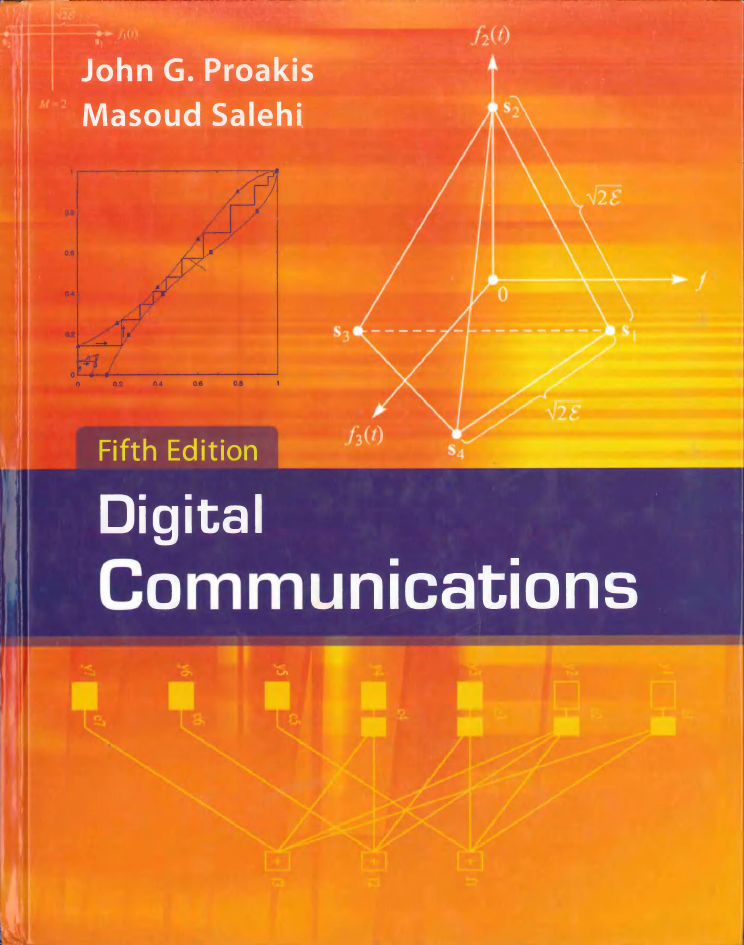
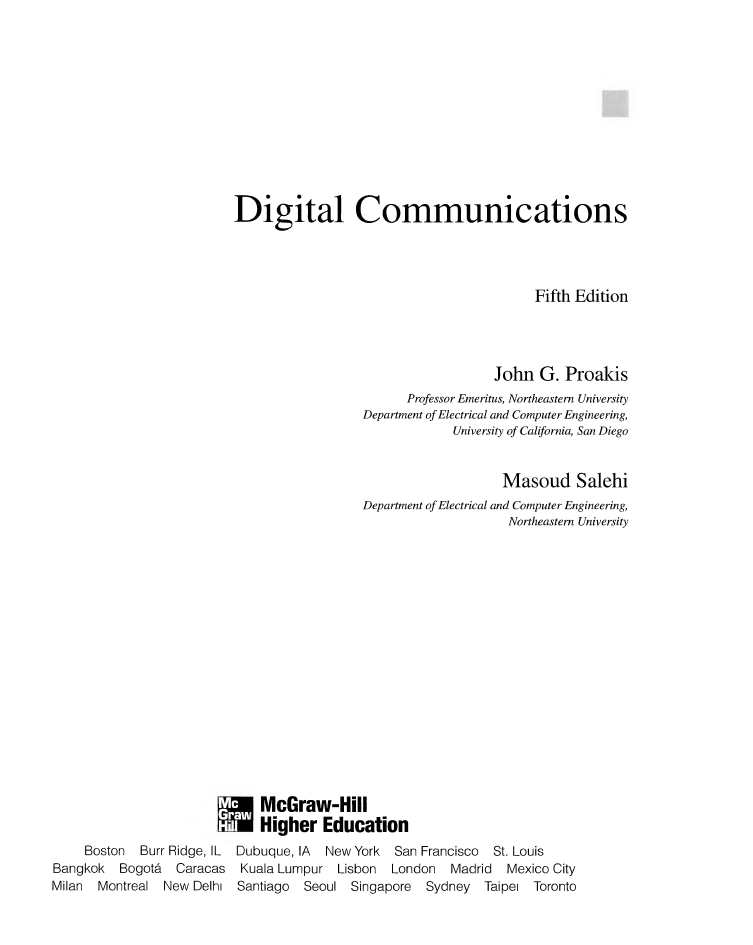
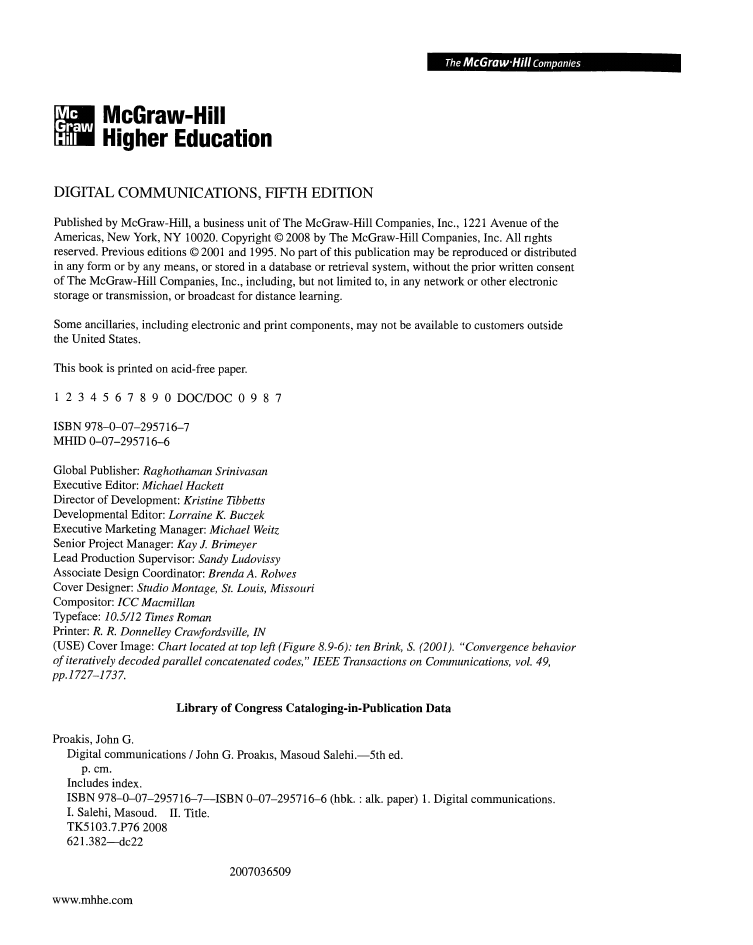
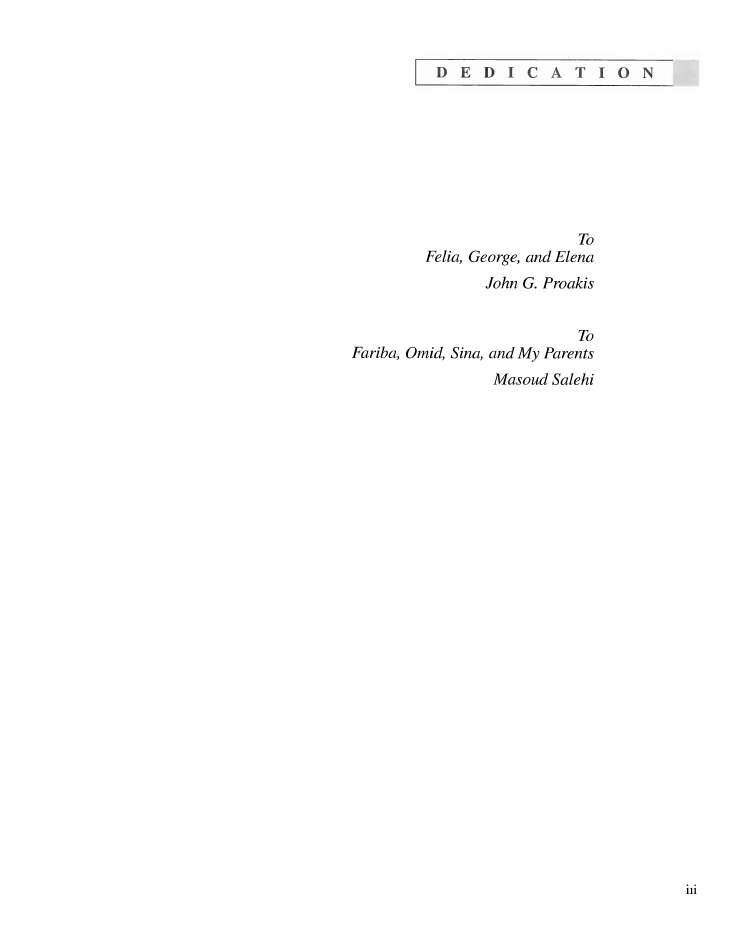


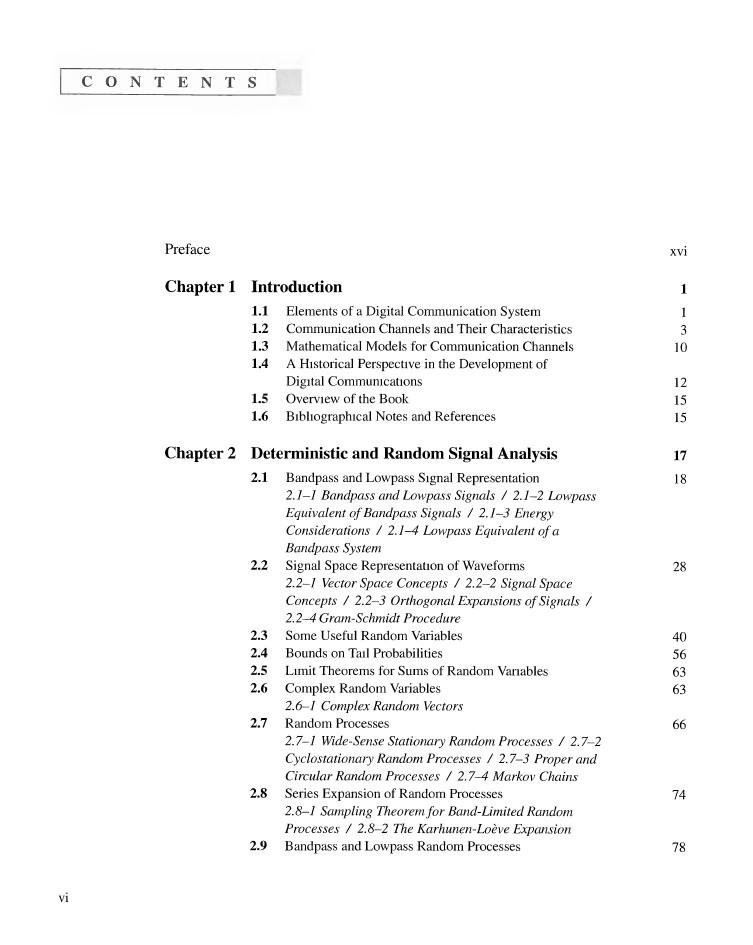
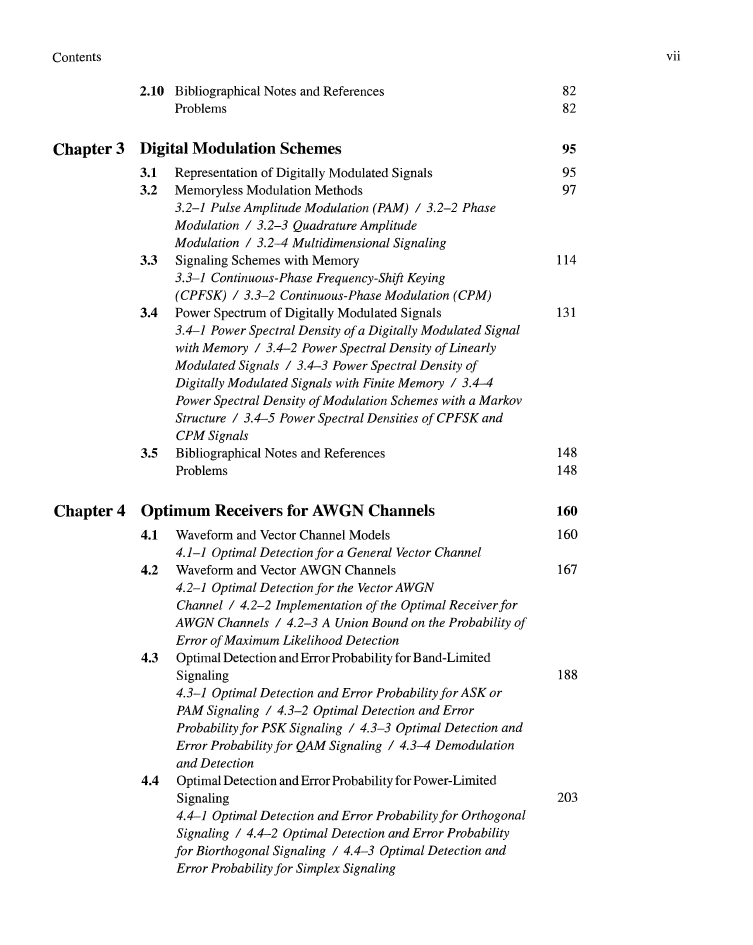








 2023年江西萍乡中考道德与法治真题及答案.doc
2023年江西萍乡中考道德与法治真题及答案.doc 2012年重庆南川中考生物真题及答案.doc
2012年重庆南川中考生物真题及答案.doc 2013年江西师范大学地理学综合及文艺理论基础考研真题.doc
2013年江西师范大学地理学综合及文艺理论基础考研真题.doc 2020年四川甘孜小升初语文真题及答案I卷.doc
2020年四川甘孜小升初语文真题及答案I卷.doc 2020年注册岩土工程师专业基础考试真题及答案.doc
2020年注册岩土工程师专业基础考试真题及答案.doc 2023-2024学年福建省厦门市九年级上学期数学月考试题及答案.doc
2023-2024学年福建省厦门市九年级上学期数学月考试题及答案.doc 2021-2022学年辽宁省沈阳市大东区九年级上学期语文期末试题及答案.doc
2021-2022学年辽宁省沈阳市大东区九年级上学期语文期末试题及答案.doc 2022-2023学年北京东城区初三第一学期物理期末试卷及答案.doc
2022-2023学年北京东城区初三第一学期物理期末试卷及答案.doc 2018上半年江西教师资格初中地理学科知识与教学能力真题及答案.doc
2018上半年江西教师资格初中地理学科知识与教学能力真题及答案.doc 2012年河北国家公务员申论考试真题及答案-省级.doc
2012年河北国家公务员申论考试真题及答案-省级.doc 2020-2021学年江苏省扬州市江都区邵樊片九年级上学期数学第一次质量检测试题及答案.doc
2020-2021学年江苏省扬州市江都区邵樊片九年级上学期数学第一次质量检测试题及答案.doc 2022下半年黑龙江教师资格证中学综合素质真题及答案.doc
2022下半年黑龙江教师资格证中学综合素质真题及答案.doc